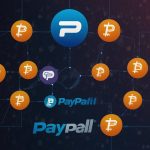
XRP Solana Lightchain AI Which Crypto Leads in 2025
Ripple Labs’ XRP has established a stronghold as a pillar in cross-border payment solutions since its entry in 2012. With a market cap of 125 billion dollars and a price tag of 2.13 dollars on the 18th of July 2025, XRP recorded a year-over-year increase of 347 percent, thanks to regulatory clarity and institutional adoption. It takes 3 to 5 seconds with a fraction of a cent for each transaction to be processed on its XRP Ledger with a capacity of 1,500 transactions per second (TPS).
Financial institutions such as Travelex and Tranglo utilize the On-Demand Liquidity (ODL) service offered by Ripple, which does not require pre-funded accounts, enabling the transfer of money across different parts of the globe. Optimism has been driven by the May 2025 SEC settlement, in which Ripple was fined $50 million and XRP was declared not to be a security on exchange platforms. It is projected that ETFs will be approved by mid-2025. According to projections, XRP is expected to reach $ 5-7 by the first quarter of 2026, representing a 135-229 percent increase, driven by partnerships and the acquisition of $ 1.2 billion from Hidden Road.
Despite this strength, XRP has its vulnerabilities. In June 2025, a federal judge denied a motion to disband an injunction against the institutional sale, but the issue of regulatory attention was discussed; nevertheless, the centralized-control feature of Ripple makes it compliant. An initial capital of 1000 invested in XRP one year ago, when the coin was trading at the price of 0.474, would have returned 4493 dollars as a consequent rise of the coin. XRP is also centered on real utility and institutional participation; therefore, it is a safe option among risk-averse investors with finance-related motives who are interested in relatively stable returns.
Solana: The Powerful Blockchain Speedster
Solana (SOL) started in 2020 and has acquired fame due to its high-performance blockchain, relying on a Proof of History (PoH) and Proof of Stake (PoS) hybrid that offers 65,000 TPS and an average fee of $0.00025. Named at $132.16 with a market cap of $61.6 billion, SOL has soared by 40 percent in 2025, led by a slew of decentralized apps (dApps), decentralized finance (DeFi) platforms such as Raydium, and non-fungible token (NFT) marketplaces like Magic Eden. The scalability of Solana has attracted developers, and currently, there are over 1,000 live projects; however, network outages in 2024 have called into question its reliability. New upgrades have maintained its stability, and its strength is highlighted by institutional interest, such as a total value locked (TVL) of 2.7 billion in DeFi.
Pundits estimate that SOL will reach $200 by the end of the year, a 51 percent gain, but the $61.6 billion market capitalization helps keep it from soaring. One year ago, at a price of SOL of 94.37, the investment in SOL would have yielded a weak return of 1k per annum to 1.4k right now. The fact that Solana can be utilized in DeFi, NFTs, and games is attractive to investors seeking to diversify their exposure; however, the centralization risks and the emergence of newer chains pose threats. It has a well-established ecosystem, and, therefore, is a steady choice when it comes to scalability and developer activity.
The Disruptor AI: Lightchain AI
The newest entry is called Lightchain AI (LCAI), which combines blockchain and artificial intelligence. Based on its presale price of 0.007 today, it has raised $ 19.3 million by July 2025. LCAI is a new decentralized network with 10 billion tokens to be distributed through a PoI consensus, where nodes are rewarded for AI computations, aiming to improve the fields of computational security, efficiency, and scalability, as well as address privacy issues. It features its Artificial Intelligence Virtual Machine (AIVM), which can support decentralized AI applications in the healthcare, logistics, and governance sectors, distinguishing it from XRP’s payment-focused and Solana’s dApp ecosystems. Analysts are projected to forecast a 7,400 percent rally, peaking at $0.518 by year-end, as some foresee the coin reaching nearly $20 by 2026, following the launch of its testnet in January 2025 and the activation of its mainnet in March.
The high-risk, high-reward nature of LCAI would get the investor 142,857 tokens worth an estimated $73,999 with an investment of $\$1,000 at $\$0.007 or $\$2.86 million by the time LCAI reaches the current market value of $\$20. Nevertheless, being a project in initial phases, LCAI is quite volatile, and its market will depend on the successful execution of the roadmap and acceptance. It is a futuristic amalgamation of AI and blockchain, making it a high-risk investment on the radar of risk-appetite investors.
Investment Potential Use of Comparison
The types of investors that XRP, Solana, and Lightchain AI can address are different. XRP boasts a secure network, regulatory certainty, and institutional adoption; thus, it is a low-risk solution, making it suitable for conservative investors. It has a market cap of $125 billion which constrains the explosive profits but has the potential of rising in the range of $5 to 7. The risk associated with the Solana blockchain is moderate, boasting a multifaceted ecosystem that would attract individuals interested in exposure to DeFi and NFTs; however, network reliability remains an issue. Lightchain AI, a company with an AI-focused innovation and a low market cap of $70 million, has the most significant upside, but is the most risky given that it is still an early-stage company.
A moderate portfolio can have $1,000 invested in the following assets: $ 400 in XRP, which generates stability, $ 300 in SOL, which creates growth, and $ 300 in LCAI, which has high-risk prospects. MRP has the potential to earn $1,880 at a gain of 5, SOL 1,135 at a 200% gain, and Lajaiceximalcaiene $10,571 at 0.518, which totals a combined blended gain of 1,259%. Investors must balance the known utility of XRP, the scalability of Solana, and the disruptive potential of LCAI against their respective risk levels. The presale of Lightchain AI appears to be a solid opportunity in 2025, as the market is dynamic, although XRP and Solana may be viewed as more reliable options.



 Bitcoin
Bitcoin  Ethereum
Ethereum  Tether
Tether  XRP
XRP  USDC
USDC  TRON
TRON  Lido Staked Ether
Lido Staked Ether  Cardano
Cardano  Avalanche
Avalanche  Toncoin
Toncoin  Wrapped SOL
Wrapped SOL